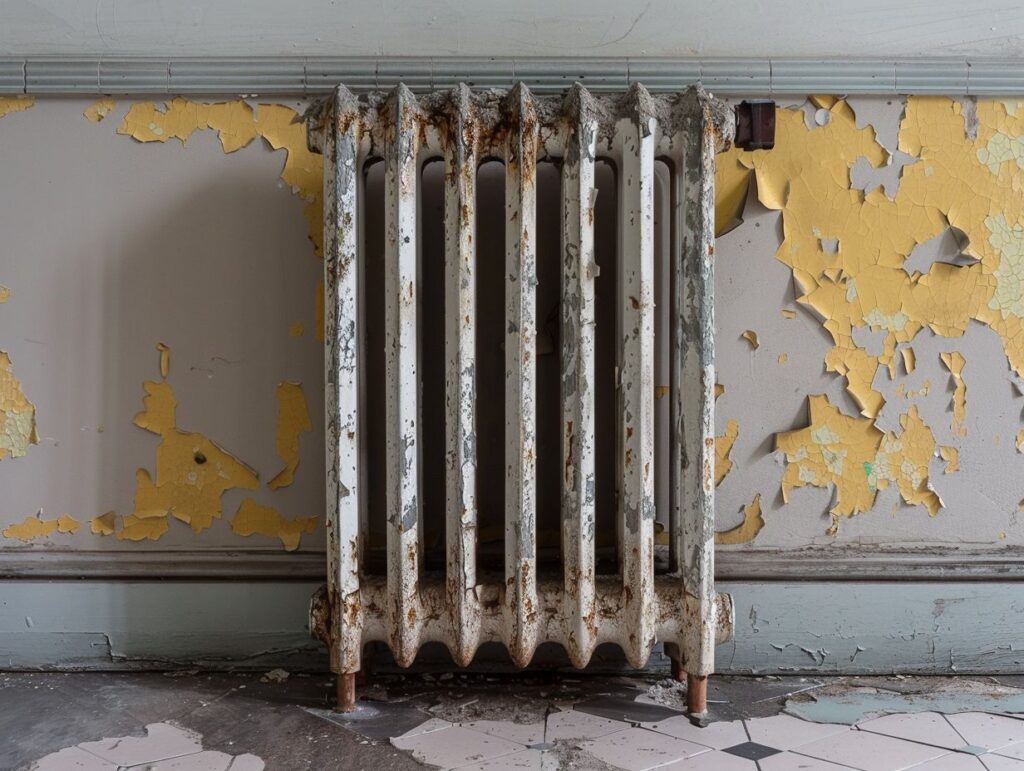If you are considering painting your kitchen radiator but are unsure where to begin, this comprehensive guide is designed to help you navigate through the process. It covers everything you need to know about kitchen radiators, including the various types available and the significance of proper maintenance.
Additionally, we will explore the most suitable types of paint for radiators and offer advice on achieving a flawless finish. Whether you are a novice or a seasoned DIY enthusiast, this article aims to assist you in revitalising your radiator and maintaining its appearance for years to come.
Key Takeaways:
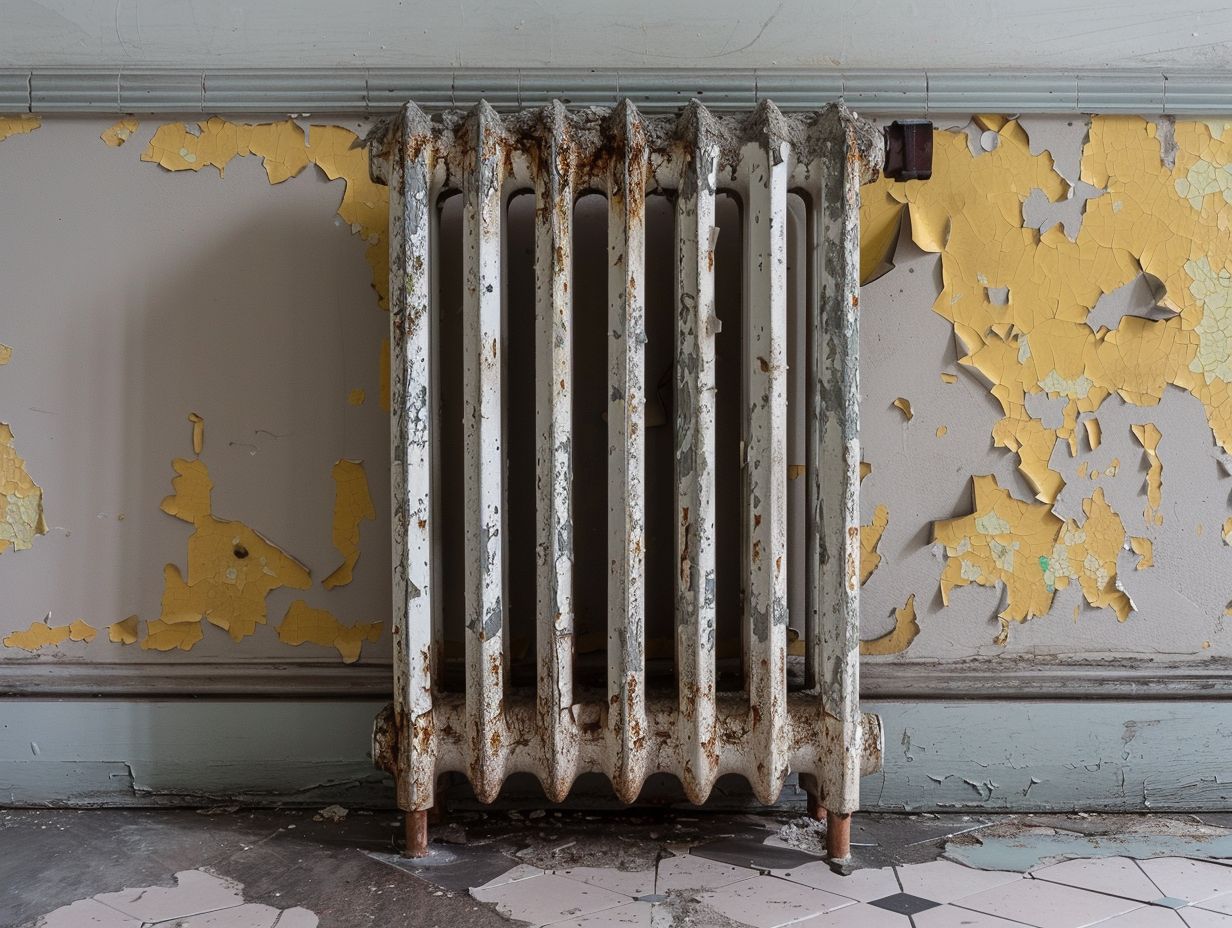
- Choose the right type of paint for your kitchen radiator, such as high-heat or specialty radiator paint, to ensure a long-lasting and seamless finish.
- Before painting, properly prepare the radiator by cleaning and sanding the surface, and applying a primer to ensure adhesion and prevent chipping or peeling.
- Maintain your painted kitchen radiator by regularly cleaning and touching up any areas that may have chipped or faded, to keep it looking fresh and functioning properly.
Choosing the Right Paint for Your Radiator
When selecting the appropriate paint for your radiator, it is crucial to choose a durable finish that can endure the heat generated while also complementing the overall colour scheme of the room.
Opting for paints specifically designed for high temperatures is essential to prevent peeling or discolouration over time, ensuring long-lasting results. Along with heat resistance, considering the colour compatibility of the paint with the room’s existing decor can enhance the overall aesthetic appeal.
Proper surface preparation is key to a successful paint job on your radiator. This includes cleaning and priming the radiator before painting to ensure proper adhesion and longevity of the paint finish, especially in the face of constant heat exposure.
By following these steps and selecting the right paint, you can achieve a professional and lasting result for your radiator while maintaining the visual harmony of the room.
Types of Paint Suitable for Radiators
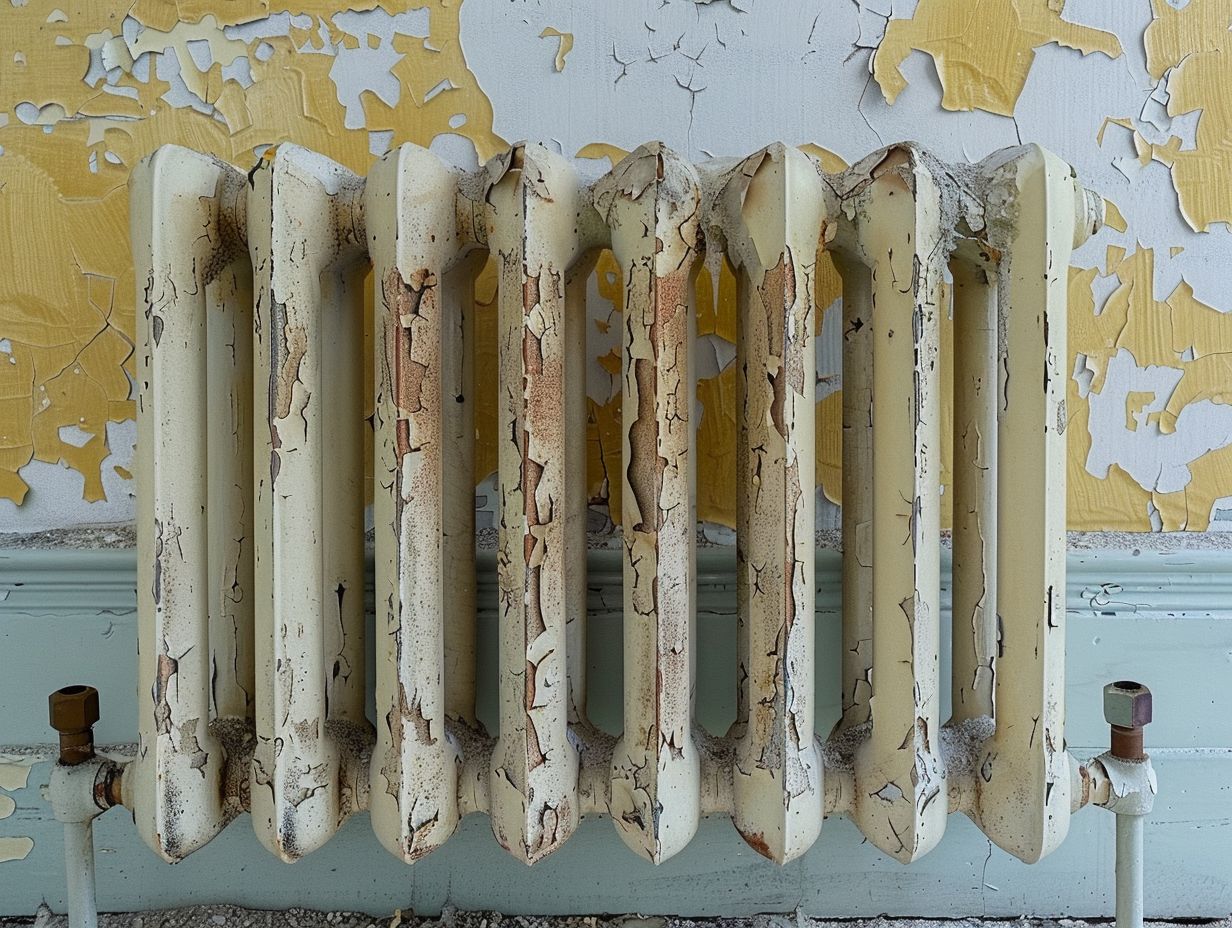
When painting radiators, you should carefully consider using heat-resistant paint options such as specialist radiator paint, spray metal primer, and clear enamel radiator gloss for a finish that is both durable and visually appealing. These various types of paint play essential roles in ensuring the longevity and effectiveness of protecting radiators.
Specialist radiator paint is specifically formulated to endure high temperatures, preventing peeling or chipping caused by heat exposure. Spray metal primer serves as a foundational coat, improving adhesion and creating a smooth surface for the top coat to bond to.
Meanwhile, clear enamel radiator gloss provides a protective layer that not only enhances the final appearance but also simplifies cleaning.
By combining these paints, you can achieve radiators that excel in both functionality and aesthetic quality.
Considerations for Heat Resistance
When selecting paint for your radiator, it is crucial to prioritise heat-resistant options like specialist radiator paint or protective clear radiator paint. This choice ensures the longevity and durability of your radiator in high-temperature environments.
Specialist radiator paints are specifically designed to endure the extreme heat emitted by radiators. These paints not only deliver exceptional heat resistance but also provide additional protection against rust and corrosion.
Opting for a top-quality specialist radiator paint can significantly prolong the lifespan of your radiator, guaranteeing that it retains both its functionality and aesthetic appeal over an extended period.
Certain specialist options come in a range of colours and finishes, enabling you to personalise the appearance of your radiator while taking advantage of their heat-resistant characteristics.
Preparing Your Radiator for Painting
When painting your radiator, thorough preparation is essential. Begin by cleaning the surface, sanding it to achieve smoothness, and applying an appropriate primer for optimal adhesion of the paint.
Cleaning the radiator surface is critical to eliminate any dirt, grease, or existing paint that could impact the new coat’s adhesion. Utilise a degreaser and a cloth to meticulously clean the radiator, ensuring a pristine surface for painting.
Subsequently, sand the surface with fine-grit sandpaper to create a smooth finish and enhance paint adherence. Keep in mind that using primer is essential as it establishes a protective barrier between the metal surface and the paint, guaranteeing durable and uniform coverage.
Cleaning and Sanding the Surface
Before painting, it is essential to prepare the radiator surface properly by cleaning and sanding it. Start by ensuring the surface is free of dirt, dry, and smooth using sandpaper to establish an optimal base for paint adhesion.
To begin, wipe the surface with a damp cloth to eliminate any dust or debris that may have accumulated. Following this, lightly sand the surface using fine-grit sandpaper to smooth out imperfections and rough patches, ensuring the paint will adhere smoothly and evenly.
After sanding, ensure the surface is thoroughly dried to prevent any moisture from impacting the paint application. Maintaining a clean, dry, and smooth surface is crucial in achieving a professional finish on your radiator.
Priming the Radiator
Incorporating the priming process into your painting routine is vital for achieving optimal results. By applying a primer coat before the final topcoat, you establish a smooth foundation that enhances paint adhesion and promotes a durable, long-lasting finish.
This critical preparatory step ensures proper adhesion of the paint to the surface, preventing common issues such as peeling or uneven coverage. Using a primer coat not only increases the longevity of the paint job but also contributes to a more professional and refined appearance. Thorough preparation, including priming, is essential for achieving a seamless and flawless finish that will last over time.
Painting Your Kitchen Radiator
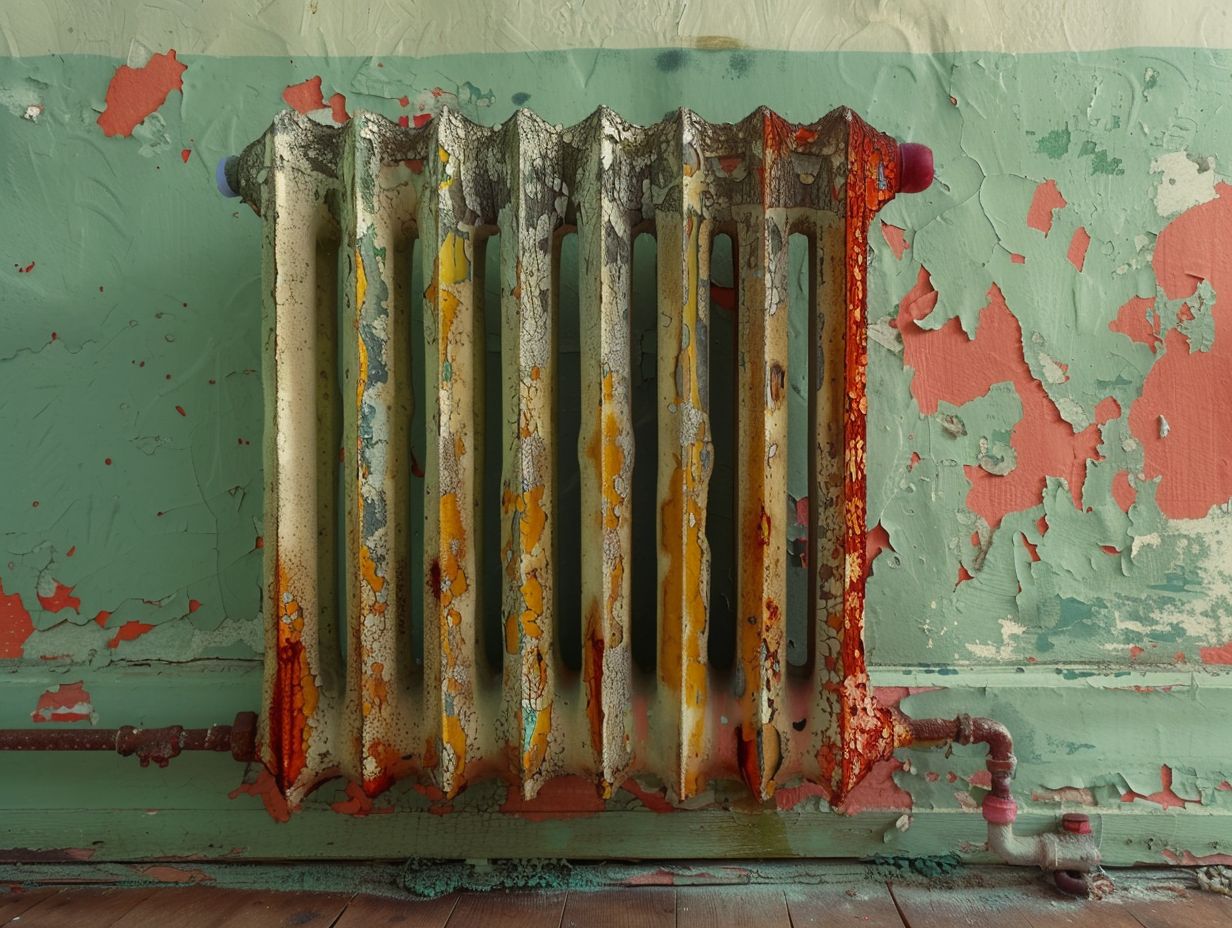
When painting your kitchen radiator, ensure attention to detail by employing proper techniques to achieve a smooth finish and ensuring even application of paint coats for a professional look. To begin, it is crucial to adequately prep the radiator surface by cleaning off any dust or debris. Utilise a suitable primer to enhance the paint’s adhesion.
When applying the paint, use a high-quality brush or roller to prevent streaks and ensure a seamless finish. Remember to allow each coat to dry completely before applying the next layer to avoid any clumping or unevenness. For a professional result, consider sanding between coats to achieve a smoother texture and a flawless appearance.
Exercise patience and precision to elevate your kitchen radiator into a stylish focal point of the room.
Techniques for a Smooth Finish
To achieve a professional finish when painting a radiator, you should utilise appropriate tools such as a high-quality brush, choose emulsion paint that is suitable for a consistent texture, and use even strokes for a flawless outcome.
When selecting a brush for painting radiators, it is recommended that you choose one with fine bristles that can easily access tight spaces. Emulsion paint is commonly favoured for radiators due to its durability and ease of application.
Applying thin layers of paint in a smooth, continuous manner can help prevent drips and ensure an even coating. It is important to allow each coat to fully dry before applying another layer to achieve a professional finish.
Tips for Avoiding Drips and Runs
To avoid drips and runs when painting your radiator, remember to apply thin coats of paint, allow proper drying time between layers, and refrain from overcoating to maintain a flawless finish.
When painting radiators, it is essential to keep in mind that patience is critical. Rushing through the process can lead to unsightly drips that can detract from the overall appearance of the radiator. By ensuring that each coat of paint has dried completely before applying the next one, you can minimise the risk of drips or runs.
Consider using a high-quality paintbrush or spray paint for a smooth and even application, ensuring that the paint adheres well to the surface without creating excess buildup that could result in drips.
Maintaining Your Painted Radiator
Regular maintenance of your painted radiator is essential to preserve its appearance and ensure long-lasting durability, involving periodic cleaning and touch-ups as needed. Cleaning your radiator regularly not only helps in removing dust and dirt buildup but also prevents the paint from chipping or fading over time.
It is recommended to use a mild detergent or vinegar solution for cleaning to avoid damaging the paint. Performing touch-ups on any scratches or chips not only maintains the aesthetic appeal but also acts as a protective barrier against corrosion.
By incorporating these simple maintenance practices into your routine, you can extend the lifespan of your painted radiator and keep it looking pristine for years to come.
Cleaning and Touching Up as Needed
To maintain your painted radiator, it is recommended to follow cleaning guidelines provided by experts like Dr. Dulux and conduct touch-ups using matching emulsion paint to preserve the fresh and vibrant appearance.
To initiate the cleaning process, start by dusting the radiator with a soft, dry cloth to eliminate any surface debris. For more stubborn stains, create a mixture of mild detergent and warm water, then gently scrub the affected areas with a sponge. Always remember to test the cleaning solution on a small, inconspicuous area beforehand to ensure it does not cause any damage to the paint.
Once the radiator is clean, carefully examine it for any chips or scratches that may require touch-up. Dr. Dulux advises using a small brush to apply the matching emulsion paint to these areas in order to achieve a seamless finish.
Frequently Asked Questions
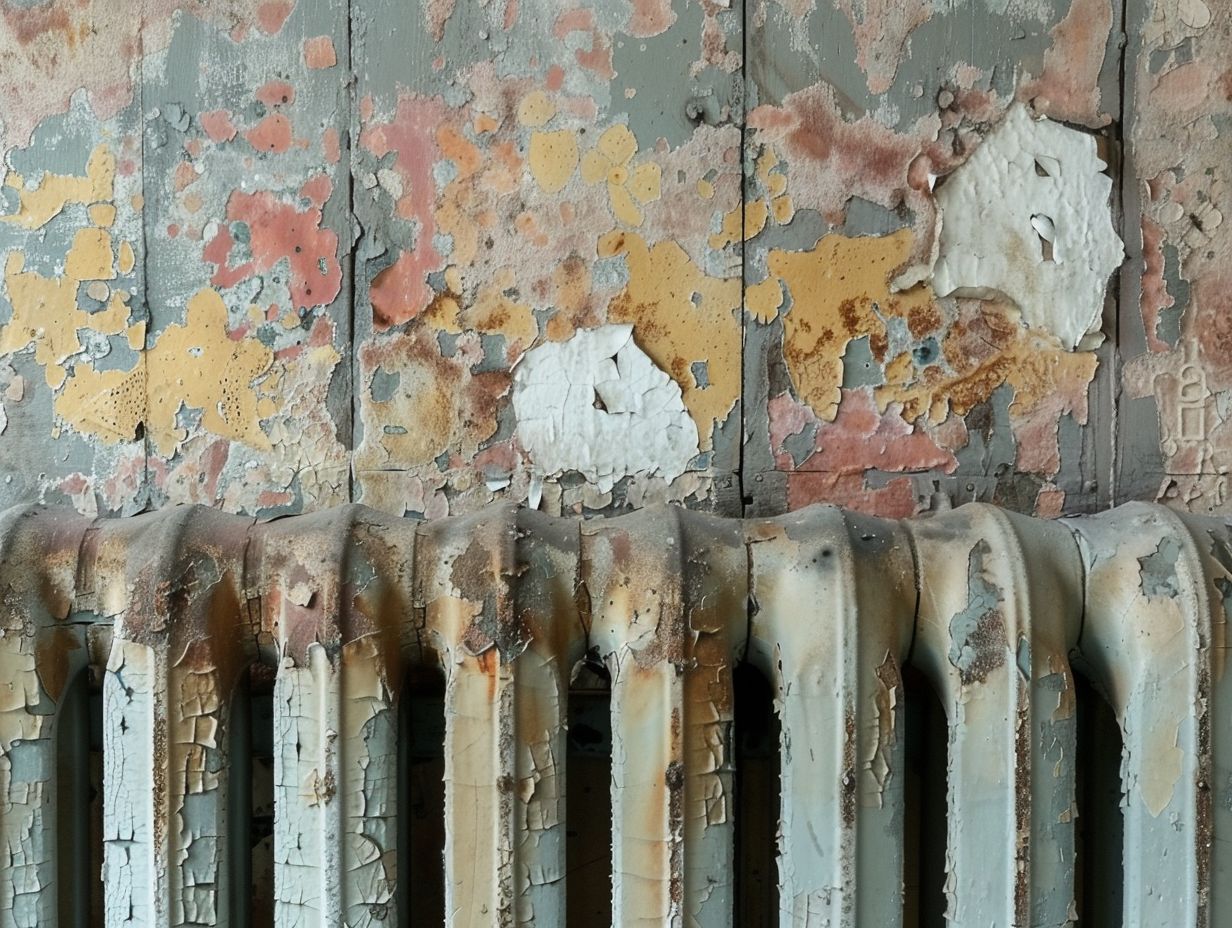
Can I Paint a Kitchen Radiator?
Yes, it is possible to paint a kitchen radiator. However, there are certain factors to consider before doing so.
What type of paint should I use to paint a kitchen radiator?
It is recommended to use a high-heat paint specifically designed for radiators. Regular paint may peel or discolour due to the high temperatures of a radiator.
Do I need to prepare the radiator before painting?
Yes, it is important to properly clean and prepare the radiator before painting. This includes removing any dust, dirt, or grime, and sanding down any rough areas.
Can I paint a kitchen radiator while it is still attached to the wall?
It is possible to paint a radiator while it is still attached to the wall, but it may be more difficult to get an even coat and reach all areas. It is recommended to remove the radiator for easier and more thorough painting.
Are there any safety precautions I should take when painting a kitchen radiator?
Yes, it is important to make sure the radiator is cool and turned off before painting. It is also recommended to wear gloves and a mask to protect your skin and respiratory system from any fumes.
How long will it take for the paint to dry on a kitchen radiator?
The drying time will depend on the type of paint used, but it is typically recommended to wait at least 24 hours before turning the radiator back on to avoid any damage to the paint.

